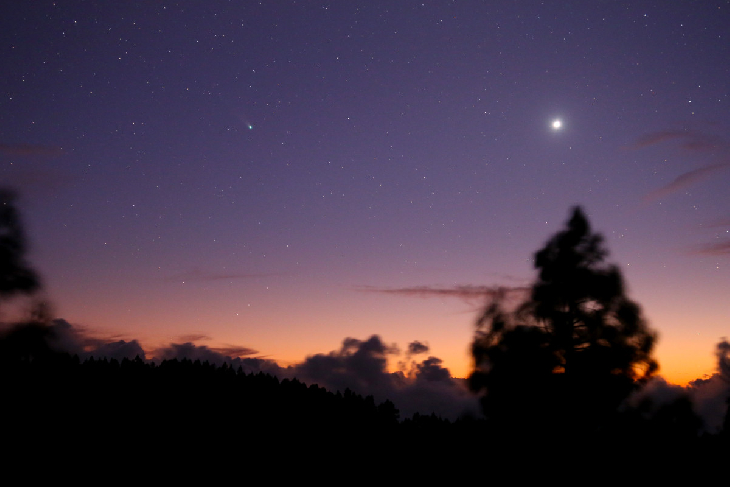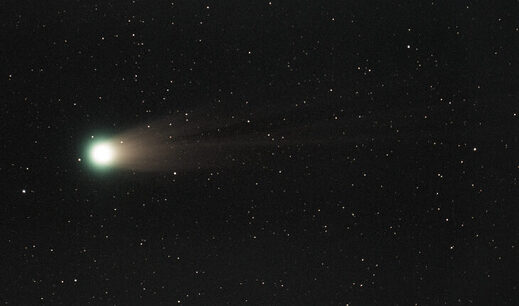
Comet Leonard (C/2021 A1) is bright again. On Dec. 20th, astronomers witnessed an outburst from the comet's core. In a matter of hours, it multiplied in brightness almost 10-fold. "Tonight it was clearly visible as a 'star' to the left of Venus," reports Jan Hattenbach, who sends this picture from La Palma in the Canary Islands:
"I estimate magnitude 3 or brighter," he says.
The outburst might signal a fragmentation event in the comet's core. This would come as no surprise. The comet is heading for its closest approach to the sun (0.61 AU) on Jan. 3rd. Increasing heat may be liberating new jets of gas and dust from the comet's core--or worse, blowing away huge chunks of ice and rock.

Astronomers in the southern hemisphere have the best view. "The comet is now nicely placed for us in Australia," says Ray Pickard at the Bathurst Observatory in New South Wales. Here is what he saw through the observatory's telescope:
"The comet seems to be having an outburst with a noticeable jet of material [emerging from the core]," he says.
Amateur astronomers are encouraged to monitor Comet Leonard while the outburst continues. If it's a big breakup, the comet might disintegrate and fizzle. Otherwise, it could brighten even more as the comet approaches the sun. To find Leonard in the sunset sky, go to Venus and turn left--or point your optics here.


